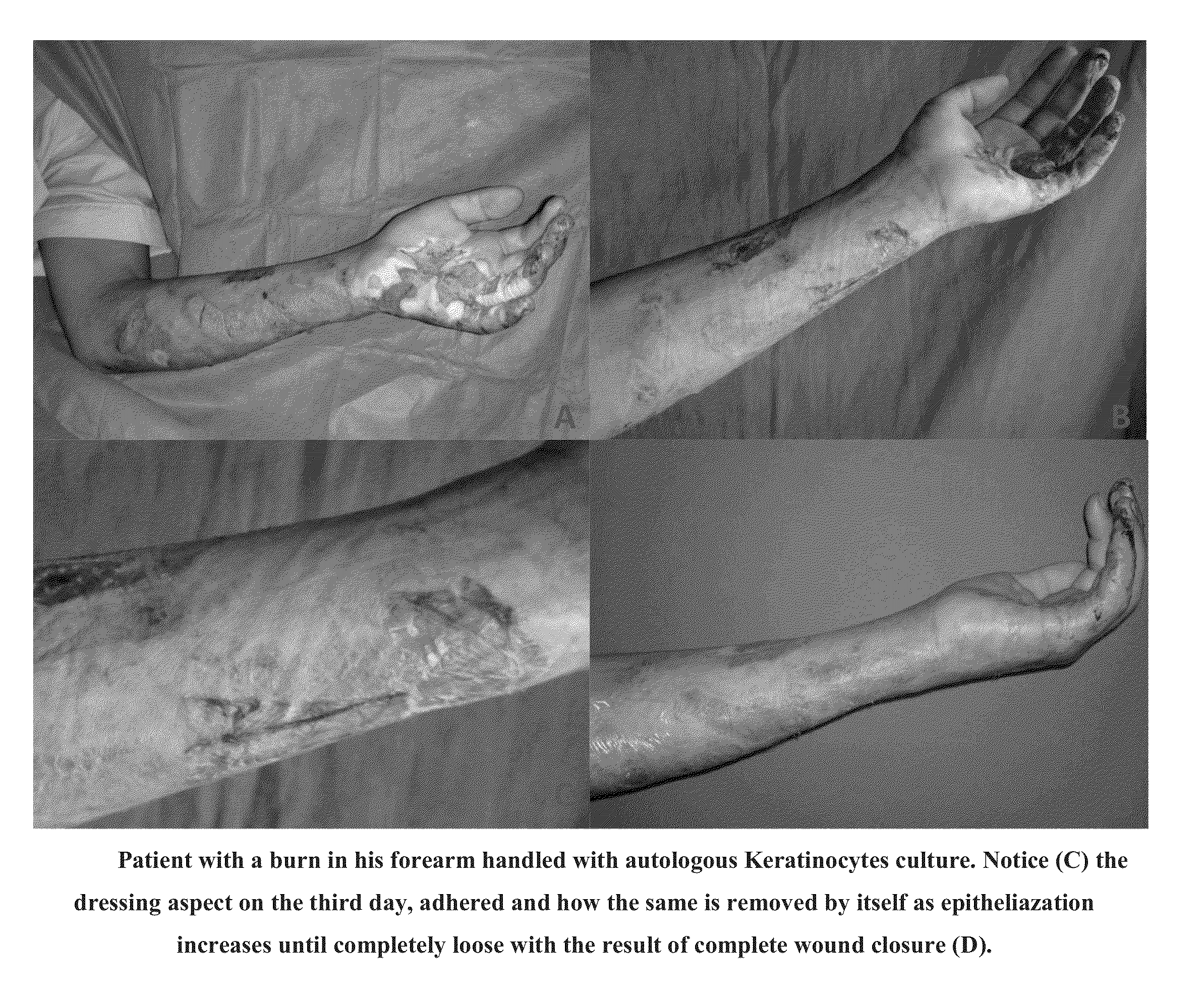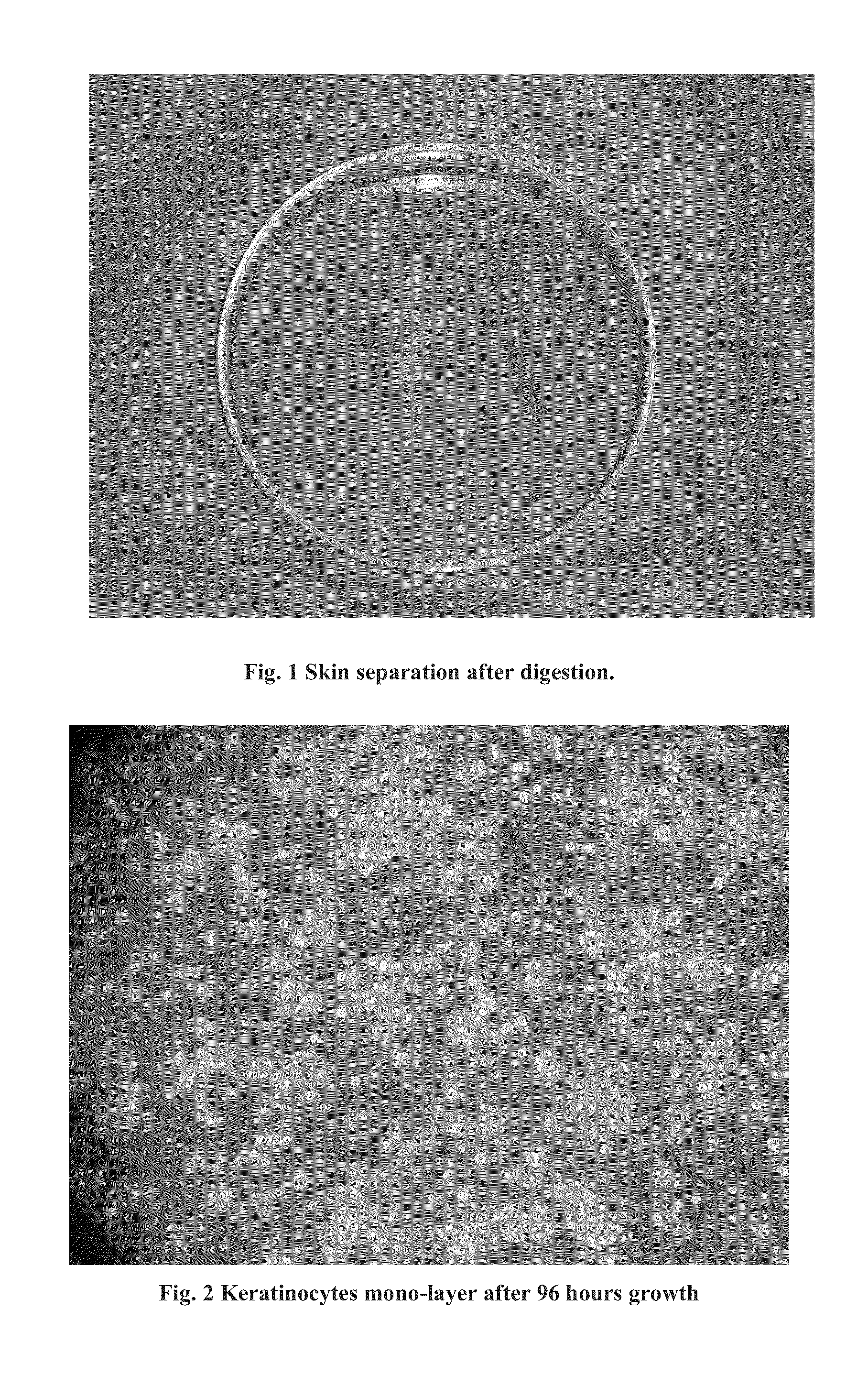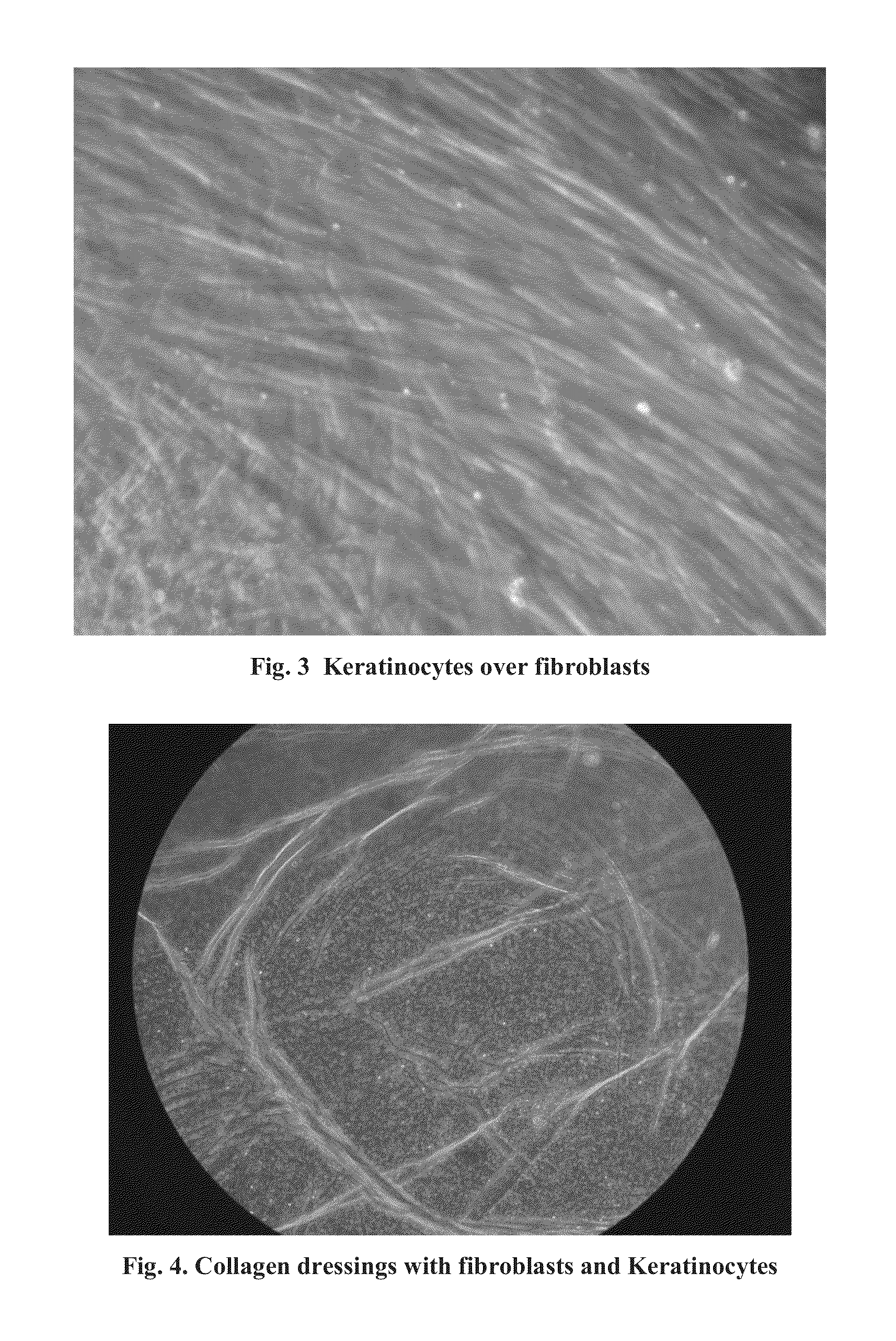Process for the production of patches or derssings of autologous skin through cultivation of autologous keratinocytes and fibroblasts with autologous serum for the generation of skin
a technology of autologous skin and autologous keratinocytes, which is applied in the field of skin dressings or patches, can solve the problems of skin injuries which require care coating these areas, high economic costs, and high cost, and achieve the disadvantages of incompatibility risks, high cost and additional scars
- Summary
- Abstract
- Description
- Claims
- Application Information
AI Technical Summary
Benefits of technology
Problems solved by technology
Method used
Image
Examples
Embodiment Construction
[0058]The present invention relates to a process for forming skin dressings or patches for coating, healing, cicatrizing, lessen cutaneous loss in patients. Said process is described below based on an exemplary embodiment provided to explain the invention as to understand the same in all its scope and spirit. It must be understood that numerous variations can be obtained by those skilled in the art which fall within the scope and spirit of the present invention. Said scope is only determined by the annexed claims.
[0059]The process, in general, is based in obtaining a skin sample and a blood sample of the patient and with these two elements the skin is cultured, which is placed on a collagen patch thus producing a dressing which further on will be used on a patient when required. Said process comprises two sub-processes which can be carried out simultaneously or sequentially, although the simultaneous way is preferred to perform the sub-processes. One sub-process starts in step 10 fo...
PUM
| Property | Measurement | Unit |
|---|---|---|
| thickness | aaaaa | aaaaa |
| thickness | aaaaa | aaaaa |
| area | aaaaa | aaaaa |
Abstract
Description
Claims
Application Information
 Login to View More
Login to View More - R&D
- Intellectual Property
- Life Sciences
- Materials
- Tech Scout
- Unparalleled Data Quality
- Higher Quality Content
- 60% Fewer Hallucinations
Browse by: Latest US Patents, China's latest patents, Technical Efficacy Thesaurus, Application Domain, Technology Topic, Popular Technical Reports.
© 2025 PatSnap. All rights reserved.Legal|Privacy policy|Modern Slavery Act Transparency Statement|Sitemap|About US| Contact US: help@patsnap.com



